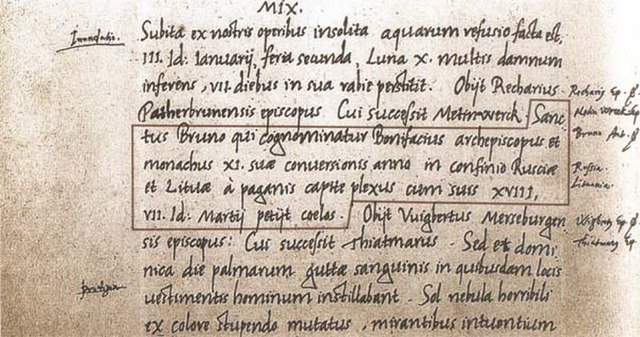The first known record of the name of Lithuania recorded in the Quedlinburg Chronicle in a 9 March 1009 story of Saint Bruno. The Chronicle recorded in the form Litua. Although it is clear the name originated from a Baltic language, scholars still debate the meaning of the word.
Lithuania's name in writing, 1009
Jogaila's seal with text ✶ ia ‚ gal ✶ - dey ✶ gracia ✶ r - ex - in ✶ lettow (1382)
The Grand Duchy of Lithuania is called dides Kunigiſtes Lietuwos on the cover of a Christian religious book from AD 1653
Tadeusz Kościuszko's manifesto distributed during the Kościuszko Uprising in capital Vilnius and further in Lithuania, referring to the state as Didelos Kunegaykſztites Letuwos, 1794
The Annals of Quedlinburg were written between 1008 and 1030 in the convent of Quedlinburg Abbey. In recent years a consensus has emerged that it is likely that the annalist was a woman. The annals are mostly dedicated to the history of the Holy Roman Empire; they also contain the first written mention of the name of Lithuania ("Litua"), in a description of an event dated to March 1009. The original document has disappeared, surviving only as a 16th-century copy held in Dresden, but its contents endure as a scholarly resource.
The first written instance of the name of Lithuania is in the Annals of Quedlinburg (1009)
St. Servatius Church and the monastery





